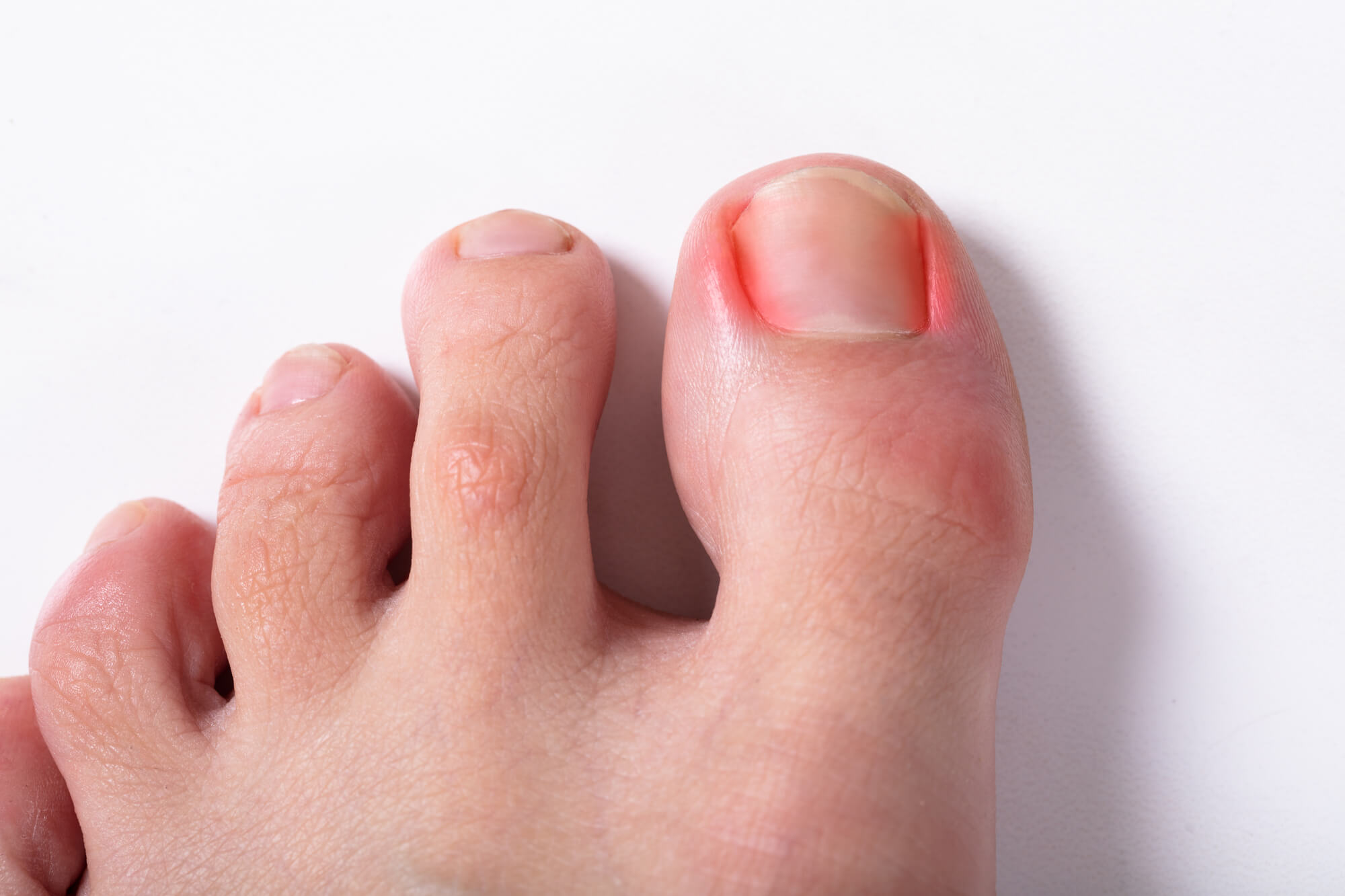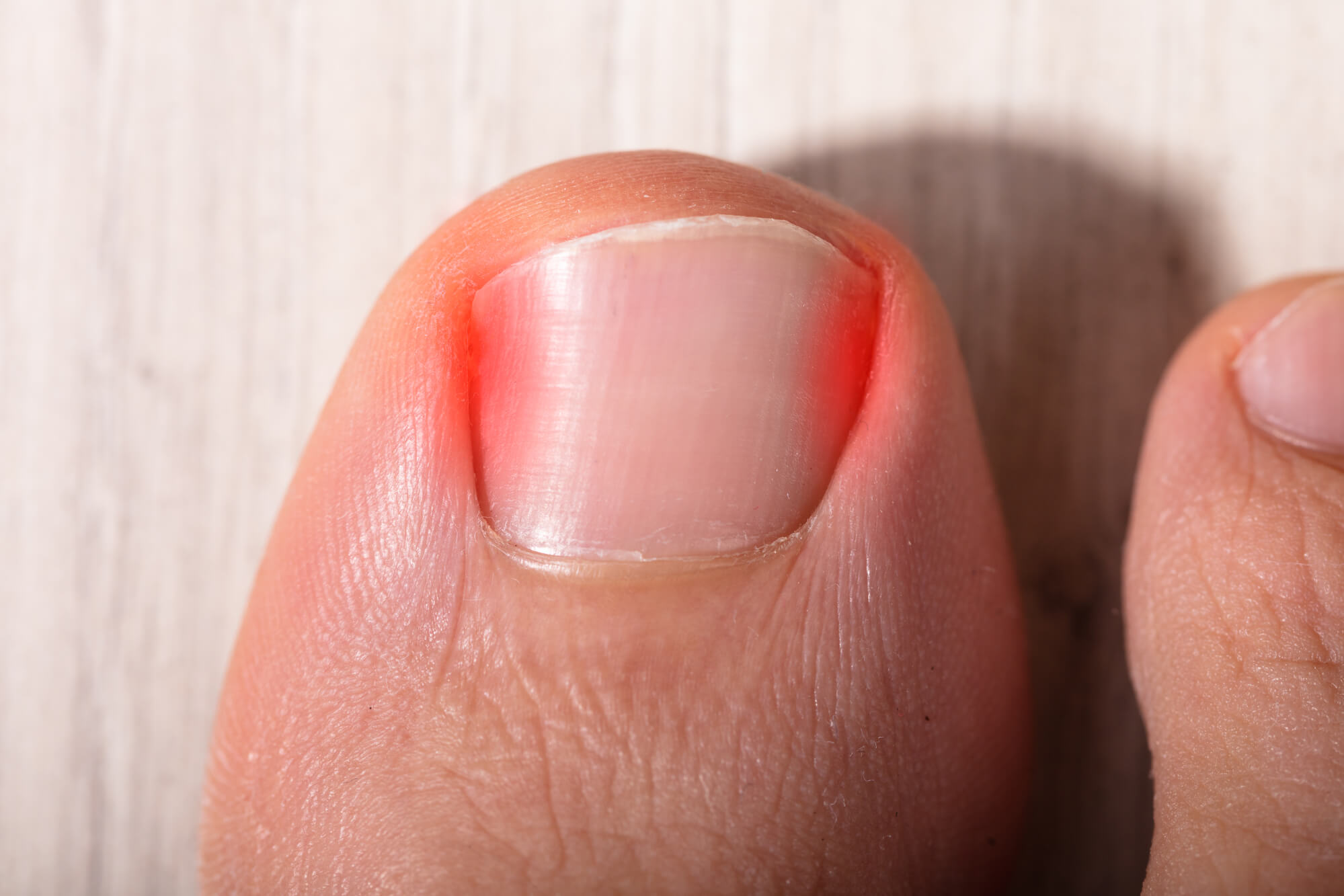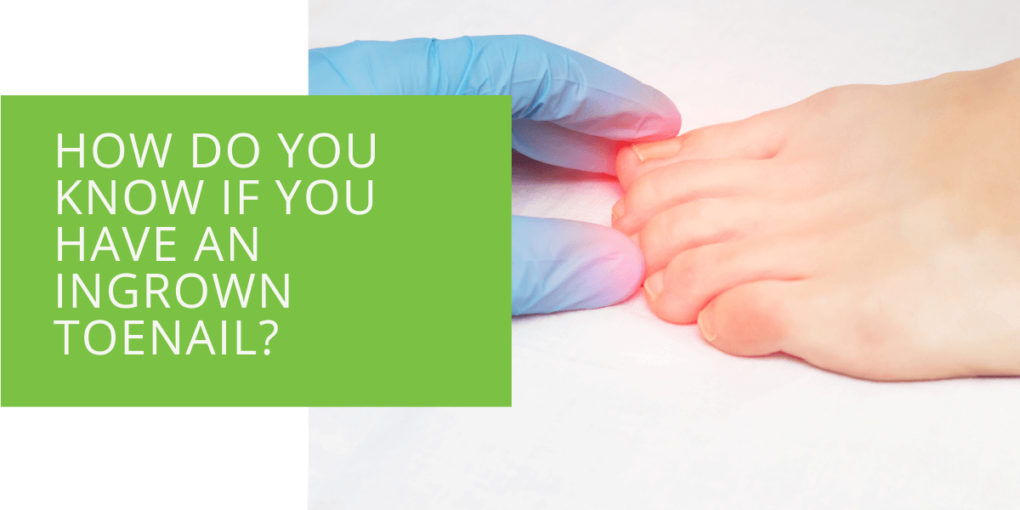How Do You Know If You Have an Ingrown Toenail?
Ingrown toenails are a common foot problem that can cause pain, swelling, and discomfort. This article will discuss the signs and symptoms of an ingrown toenail, how it is diagnosed, and the treatment options available.
What Is an Ingrown Toenail?
An ingrown toenail occurs when the toenail grows into the skin, usually on the corner or side of the nail. This can cause pain, swelling, and redness around the affected area and become infected if left untreated. Ingrown nails are commonly seen on the big toe but can affect any toe.
Toenails that are too short or cut at an angle can cause the nail to grow into the skin. Poorly fitting shoes can also pressure the toes and cause the nail to grow into the skin. Additionally, certain medical conditions that cause poor circulation can increase the risk of developing ingrown toenails.

Signs and Symptoms of an Ingrown Toenail
An ingrown toenail can cause a range of uncomfortable and painful symptoms, varying in severity depending on the individual case. Some of the most common signs and symptoms include:
- Pain or tenderness along the side of the toenail: This is often the first symptom of an ingrown toenail and can range from mild discomfort to sharp, stabbing pain.
- Swelling or redness around the affected area: In some cases, the area around the toenail may become swollen or inflamed and may appear red or discolored.
- Discharge or pus from the affected area: If the ingrown nail becomes infected, it may produce discharge or pus from the affected area.
- Difficulty wearing shoes or walking: As the ingrown toenail worsens, it may become more difficult to wear or walk normally, and may cause significant pain or discomfort.
- Changes in nail shape or appearance: In some cases, the nail may become distorted or discolored and may even begin to grow at an angle.
In more severe cases, an ingrown toenail may lead to an infection, which can cause additional symptoms such as:
- Fever or chills: If the infection becomes severe, it may cause fever or chills, common signs of a systemic infection.
- Severe pain or discomfort: As the infection worsens, it may cause significant pain or discomfort, making it difficult to perform daily activities.
- Foul odor from the affected area: In some cases, an infected ingrown nail may produce a foul odor from the affected area.
It's important to seek professional medical attention if these symptoms occur, especially if an infection is suspected. Ingrown toenails can be successfully treated when diagnosed early but can lead to more serious complications if left untreated.

Causes of Ingrown Toenails
Ingrown toenails are typically caused by the toenail growing into the skin, which can cause pain, swelling, and discomfort. While wearing tight shoes or cutting toenails at an angle are common causes, several other factors can contribute to developing this condition.
Foot Anatomy
Foot anatomy can play a role in developing ingrown toenails, as individuals with curved or thick toenails may be more susceptible to this condition. Additionally, those with a naturally rounded or inward curvature of the nail bed may be at a higher risk of developing ingrown nails.
Genetics
Genetics can also play a role in the development of ingrown toenails. Individuals with a family history may be more likely to develop this condition due to inherited traits that affect the shape and structure of the nails.
Age
As we age, our toenails may become thicker and more curved, increasing the risk of developing ingrown toenails. Additionally, older adults may experience decreased circulation, which can also contribute to the development of this condition.
Trauma
Trauma to the toe, such as dropping a heavy object on it or stubbing it, can cause the toenail to grow into the skin and develop an ingrown toenail.

Diagnosis of an Ingrown Toenail
A podiatrist can diagnose an ingrown toenail by examining the toe and the affected area. During the examination, the podiatrist will look for signs of infection and ask about the patient's symptoms and medical history. Sometimes, the podiatrist may take a culture of the discharge from the affected area to determine the type of bacteria causing the infection.
Treatment Options for an Ingrown Toenail
Self-care remedies may effectively alleviate symptoms in mild cases of an ingrown toenail. These remedies may include soaking the toe in warm water, applying antibiotic cream to the affected area, and wearing shoes that are not too tight or loose.
If self-care remedies are ineffective, a podiatrist may recommend surgical options to remove the ingrown portion of the nail. This may involve a partial or complete nail removal, which can be done under local anesthesia in the podiatrist's office.
Prevention of Ingrown Toenails
To prevent ingrown toenails, it's important to cut your toenails straight across and avoid cutting them too short. Wear shoes that fit well and provide adequate support, and avoid wearing shoes that are too tight or loose. Maintaining good foot hygiene and inspecting your feet regularly for signs of infection or injury is also important.
When to See a Podiatrist
If self-care remedies are ineffective, or if the toenail shows signs of infection or other complications, it's important to see a podiatrist for a proper diagnosis and treatment. In severe cases of an ingrown nail, medical attention may be necessary to prevent the spread of infection or other complications.
Conclusion
An ingrown toenail can cause pain and discomfort, but effective treatment options are available. It's important to seek professional medical attention if you experience any symptoms of an ingrown toenail and to take preventative measures to avoid further complications. By maintaining good foot hygiene and seeking timely medical attention, you can effectively manage an ingrown toenail and maintain good foot health.

